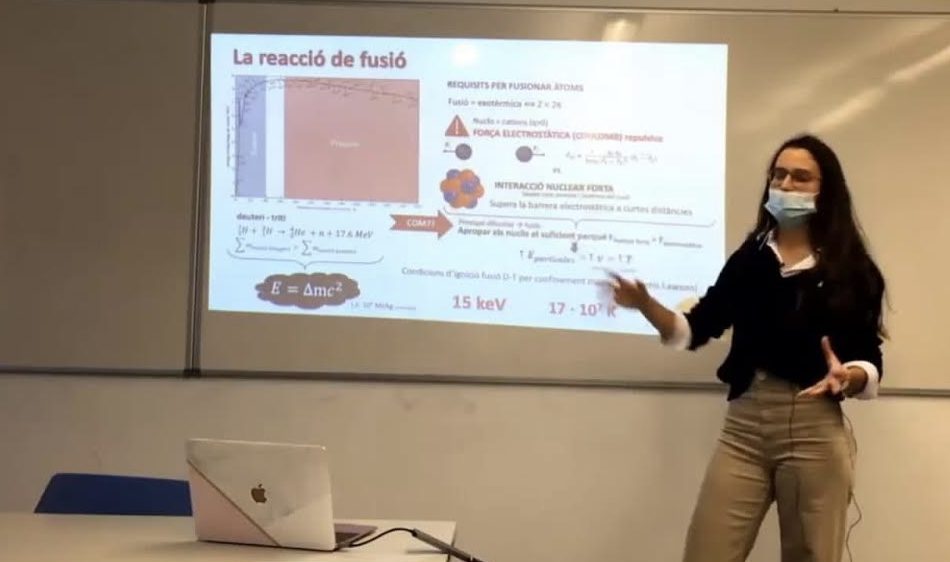
My name is Ruth Mora Soto and during last summer I was working in my high school research project in an internship at the Fusion Group (CASE) in Barcelona Supercomputing Center.
As part of BSC´s second promotion of “Bojos per la Supercomputació”, I was fortunate to count on BSC support in my “Treball de Recerca” (TR), a compulsory research project at the end of my secondary studies. As Fusion was an area I had always appealed, I decided to take advantage of such project to deepen into it. Therefore, I was put in contact with the Fusion group and had the opportunity to do an internship in there in order to carry out my TR.
Firstly, I was introduced to Fusion thanks to the books and support I received by the group from the very beginning. Furthermore, I was assigned a mentor: Jordi Manyer, who would instruct me along my assignment and help me to find a subject on which focusing my project. After many extremely interesting proposals, I decided to concentrate on Plasma Heating methods. As the complexity of this subject required physics and mathematics much more complex than the ones I had studied at school, Jordi introduced me to such contents needed to deepen into the physics behind the heating methods. These introductory lessons were basically focused on electromagnetism, including both fields and specially waves.
Once I was ready to start with the project contents itself, we started by working on ohmic heating in order to understand its limitations, related with plasma resistivity. Such limitations give rise to the need of auxiliary heating methods: electromagnetic waves and NBI, techniques which were as well studied in the project. However, given BSC´s expertise in electromagnetic waves heating, special attention was put to one of these methods: ICRH. Understanding how electromagnetic waves could propagate through the plasma and reach resonance, in different harmonics, with the plasma ions was both the most challenging and exciting part of the project. In addition, we briefly addressed alpha heating and its importance when reaching ignition. One of the most rewarding aspects of this project is the fact it includes a wide variety of mathematics and physics, which has enabled me to considerably broaden the boundaries of what I had studied in school.
Although due to the Covid-19 situation it was not possible to work face-to-face, this did not prevent BSC and specially Jordi from fully supporting my project and teaching and helping me with the mathematics and physics behind plasma heating via skype.
From this experience, not only do I take with me a great deal of knowledge in really interesting physics concepts new to me but also the enriching opportunity of living the research on the way to fusion from within. I had never imagined being in contact with such a cutting-edge research group at my age neither feeling so supported and valued by such recognized scientists and engineers. What´s more, a part from being the best way to learn on fusion, this internship has showed me how actual research is like, which has been truly inspiring to me. So, after this, I feel more determined than ever to study physics and mathematics in order to, one day, research in a so rewarding and interesting atmosphere as the Fusion group at BSC is.
I feel really grateful to Prof. Mervi Mantsinen and of course researcher Jordi Manyer for having embraced me so well.
Thank you very much to all the researchers in the Fusion Group and to BSC for having given me such a valuable and inspiring experience!

Really it’s fantastic article post, thank you!